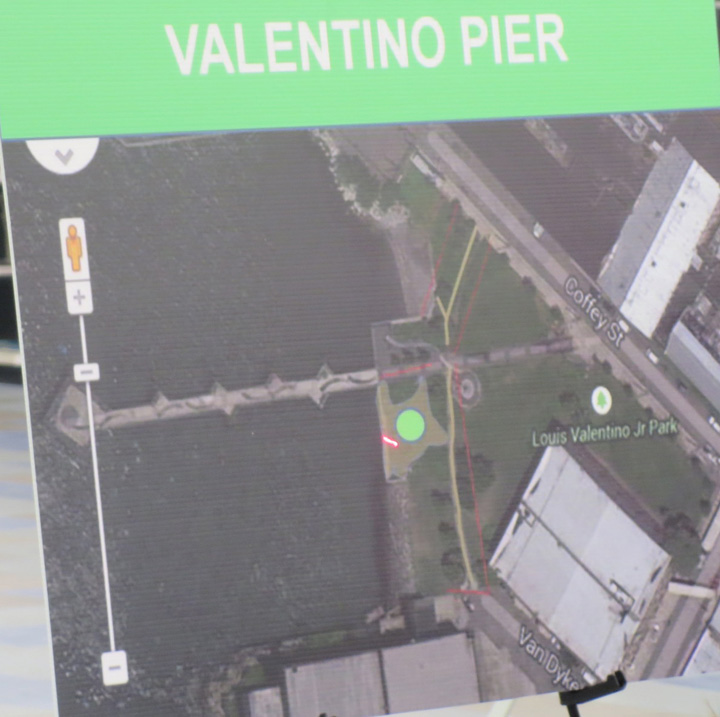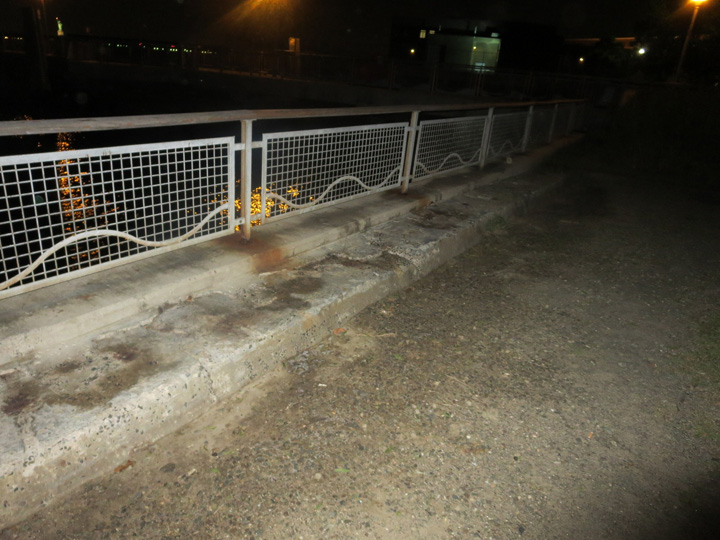Red Hook park lovers were fuming last week when, without warning, fencing was put up around Valentino Pier park. It turns out that the Parks Department had planned some minor renovations that would close some parts of the park for about a month. Many residents, still upset at the cavalier attitude in which the Coffey Park renovation was handled, couldn’t handle this latest affront and demanded action from the city councilman who promised that he would bring government to the people.

Councilman Menchaca, still in his first year in government, quickly put together a meeting bringing together Park heads, members of the Community Board, representatives from local organizations and some irate members of the community. The meeting began at 7 pm at the Red Hook Library (still on the endangered list), on Thursday night, August 4.

Carlos began with introductions, thanking the Parks people for making the trek to Red Hook. He then handed over the reigns to Brooklyn Parks Commissioner Kevin Jeffrey. Armed with the requisite posterboard map of the park, he explained the reasoning behind their plan.
The whole thing started because they needed to fix the water fountain. Jeffrey claimed that the fountain was out of order due to a street collapse. In a post meetin trip to the park, we encountered Bob Biondi, who has lived right by the park for thirty years, and he explained to us that indeed there was a DEP problem, a number of years ago, and in the course of fixing it, they capped the pipe. He told us that a few weeks ago, a plumber came and fixed it by hooking the pipe up to a different source. However, in order to fund the plumber, Parks had to dig into it’s small discretionary fund, but they had to spend more than just one plumbers visit. So they looked around and saw some other things to fix.

They have decided to redo the gravel paths, taking away the small side bars that people keep tripping over, and putting in asphalt. The gravel paths were never a good idea, Biondi told us, and were put in by a contractor who lowballed a bid to renovate the park a number of years ago, and made a poor decision with the gravel, which never stayed where it was supposed to, and was a hazard for bare feet.
The other main renovation, Jeffrey explained, was the paving over the part of the park next to the retaining wall – to the left of the walkway that goes out to sea. Right now there is a grassy area next to a bit of concrete, and in storms or heavy boat traffic, sea water comes over the fence and doesn’t drain away. This kills the grass and even a few trees. They plan to pave over the immediate area and ring off the grassy part, creating a better environment for grass and other vegetation.
The floor was then opened for comments, which came in a torrent. After an opening barrage of indignation as the community was left out of this one month renovation process, coming upon the heels of Coffey Park being closed for a year, others commented on the proposed plan. A major point of contention was the use of pavement in the park. Some wondered whether it might not be a better idea to put large rocks in the water, which might prevent some of the flooding. Others thought that the design might be done a bit more thoughtfully. Victoria Hagman volunteered the services of Gida Nandan, whose architectural firm works with resiliency situations. Dan Wiley, who represents Congresswoman Velazquez, mentioned that additional funding might come from Sandy relief, which might mean a more thought out renovation.

Mr. Jeffrey patiently took in all the complaints. He said that if the community didn’t want it, he wouldn’t do the pavement by the circle. However, he warned that the retaining wall might fail at some point without proper drainage, and a more expensive solution might have to be done in the future. Obtaining capital funding for Parks projects is always a tough nut, he said.
Carlos suggested that perhaps a plan might be put together for the next participatory budgeting cycle. In the end, a second meeting was decided upon, and Jeffrey graciously accepted the idea, saying that he would coordinate with Menchaca. He looked out at the crowd saying that he appreciated all the comments, saying “we owed you this because we put up the fencing without telling anyone about it.”












One Comment
PortSide NewYork’s description of the meeting which includes some history, links and photos http://portsidenewyork.org/portsidetanke/2014/9/5/vs03eo30e419qy9gt6xn6girynh9xz